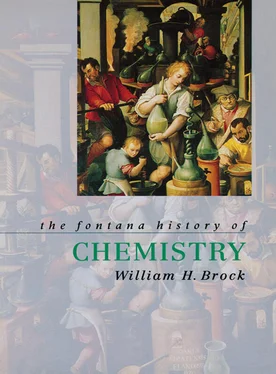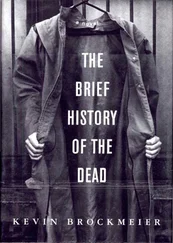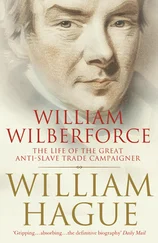Belief in the transformation of blood-like cinnabar into gold dates from 133 BC when Li Shao-chun appealed to the Emperor Wu Ti to support his investigations:
Summon spirits and you will be able to change cinnabar powder into yellow gold. With this yellow gold you may make vessels to eat and drink out of. You will increase your span of life, you will be able to see the hsien of the P’eng-lai [home of the Immortals] that is in the midst of the sea. Then you may perform the sacrifices fang and shang and escape death.
From then on, many Chinese texts referred to the consumption of potable gold. This wai tan form of alchemy, which was systematized by Ko Hung in the fourth century AD, was not, however, the only form of Chinese alchemy.
The Chinese also developed nai tan , or physiological, alchemy, in which longevity and immortality were sought not from the drinking of an external elixir, but from an ‘inner elixir’ provided by the human body itself. In principle, this was obtained from the adept’s own body by physiological techniques involving respiratory, gymnastic and sexual exercises. With the ever-increasing evidence of poisoning from wai tan alchemy, nai tan became popular from the sixth century AD, causing a diminution of laboratory practice. On the other hand, nai tan seems to have encouraged experimentation with body fluids such as urine, whose ritualistic use may have led to the Chinese isolation of sex hormones.
As Needham has observed, medicine and alchemy were always intimately connected in Chinese alchemy, a connection that is also found in Arabic alchemy. Since Greek alchemy laid far more stress on metallurgical practices – though the preparation of pharmaceutical remedies was also important – it seems highly probable that Arabic writers and experimentalists were ‘deeply influenced by Chinese ideas and discoveries’.
There is some evidence that the Chinese knew how to prepare dilute nitric acid. Whether this was prepared from saltpetre – a salt that is formed naturally in midden heaps – or whether saltpetre followed the discovery of nitric acid’s ability to dissolve other substances, is not known. Scholars have speculated that gunpowder – a mixture of saltpetre, charcoal and sulphur – was first discovered during attempts to prepare an elixir of immortality. At first used in fireworks, gunpowder was adapted for military use in the tenth century. Its formula had spread to Islamic Asia by the thirteenth century and was to stun the Europeans the following century. Gunpowder and fireworks were probably the two most important chemical contributions of Chinese alchemy, and vividly display the power of chemistry to do harm and good.
As in the Latin west, most of later Chinese alchemy was little more than chicanery, and most of the stories of alchemists’ misdeeds that are found in western literature have their literary parallels in China. Although the Jesuit missions, which arrived in China in 1582, brought with them information on western astronomy and natural philosophy, it was not until 1855 that western chemical ideas and practices were published in Chinese. A major change began in 1865 when the Kiangnan arsenal was established in Shanghai to manufacture western machinery. Within this arsenal a school of foreign languages was set up. Among the European translators was John Fryer (1839–1928), who devoted his life to translating English science texts into Chinese and to editing a popular science magazine, Ko Chih Hui Phien (Chinese Scientific and Industrial Magazine ).
Although it is possible to argue that modern chemistry did not emerge until the eighteenth century, it has to be admitted that applied, or technical, chemistry is timeless and has prehistoric roots. There is conclusive evidence that copper was smelted in the Chalcolithic and early Bronze Ages (2200 to 700 BC) in Britain and Europe. Archaeologists recognize the existence of cultures that studied, and utilized and exploited, chemical phenomena. Once fire was controlled, there followed inevitably cookery (gastronomy, according to one writer, was the first science), the metallurgical arts, and the making of pottery, paints and perfumes. There is good evidence for the practice of these chemical arts in the writings of the Egyptian and Babylonian civilizations. The seven basic metals gave their names to the days of the week. Gold, silver, iron, mercury, tin, copper and lead were all well known to ancient peoples because they either occur naturally in the free state or can easily be isolated from minerals that contain them. For the same reason, sulphur (brimstone) and carbon (charcoal) were widely known and used, as were the pigments, orpiment and stibnite (sulphides of arsenic and antimony), salt and alum (potassium aluminium sulphate), which was used as a mordant for vegetable dyes and as an astringent.
The methods of these early technologists were, of course, handed down orally and by example. Our historical records begin only about 3000 BC. With the aid of techniques derived ultimately from the kitchen, these artisans extracted medicines, perfumes and metals from plants, animals and minerals. Their goldsmiths constructed wonderful pieces of jewellery and their metallurgists worked familiarly with the common metals and their alloys, associating them freely with the planets. Jewellers were particularly interested in the different coloured effects of the various alloys that metallurgists prepared and in the staining of metallic surfaces by salts and dyes, or the staining of stones and minerals that imitated the colours of precious minerals. In fact, throughout the east we find an emphasis upon colour, and the establishment of what Needham describes as the industry of aurifiction. Clearly there existed a professional class of artisans, metallurgists and jewellers who specifically designed and made imitation jewellery from mock silver, gold or artificial stones. The Syrians and Egyptians appear to have developed a particular talent for this work, and written examples of their formulae or recipes have survived in handbooks that were compiled centuries later in about 200 BC. For example, to prepare a cheaper form of ‘asem’, an alloy of gold and silver:
Take soft tin in small pieces, purified four times; take four parts of it and three parts of pure white copper and one part of asem. Melt, and after casting, clean several times and make with it whatever you wish to. It will be asem of the first quality, which will deceive even the artisans.
Or, in the equivalent of nineteenth-century electroplating, to make a copper ring appear golden so that ‘neither the feel nor rubbing it on the touchstone will discover it’:
Grind gold and lead to a dust as fine as flour; two parts of lead for one of gold, mix them and incorporate them with gum, coat the ring with this mixture and heat. This is repeated several times until the object has taken the colour. It is difficult to discover because the rubbing power gives the mark of an object of gold and the heat [test] consumes the lead and not the gold.
In one sense this aurifictional technology can be described as simple empiricism. To say that, however, does not mean that its practitioners were devoid of ideas about the processes they worked, or that they had no model to underpin their understanding of what was happening. Given that these technologies were evidently closely bound up with magic, ritual and trade secrecy, this was equivalent to a theoretical underpinning. Although these artisans may not have had any sophisticated chemical theory to explain or guide their practices, that experience was undoubtedly bound up with ritualistic beliefs concerning the objects that were handled. We need only notice the more than obvious connection of the names of metals with the planets, and
Читать дальше












